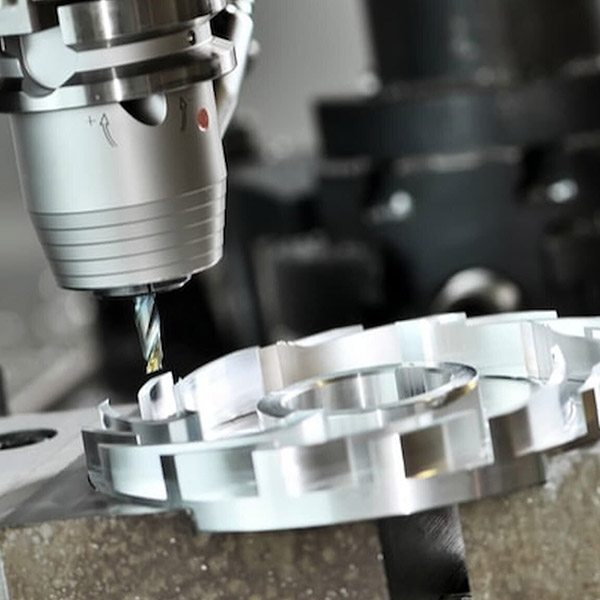CNC turning is a machining procedure that rotates a work surface against a fixed reducing tool. With the usage of CNC modern technology, turning procedures are controlled by advanced computer programs that dictate the activities of the machining tools with incredible accuracy, permitting for complicated arrangements that would be testing to accomplish manually.
Discover CNC Milling exactly how CNC turning and milling processes reinvent modern production by enhancing precision, performance, and efficiency in developing everything from straightforward parts to complicated assemblies.
The CNC turning process begins with the choice of the work surface product, which can range from metals like titanium, steel, and light weight aluminum to softer products such as plastics. The CNC system interprets the developed specs from CAD (Computer-Aided Design) illustrations, transforming them into exact movements for the cutting tools. Because CNC turning mainly concentrates on round parts, it is frequently used in applications such as creating shafts, wheels, and bushings, where high precision is vital.

On the various other hand, CNC milling is a procedure that entails the removal of material from a strong block making use of rotational cutting tools. Unlike CNC turning, the workpiece in milling stays stationary, while the device relocates along several axes to produce intricate forms and functions. This innovation stands out in creating level surface areas, angled functions, and complex forms with limited resistances. CNC milling makers are exceptionally flexible and can be furnished with numerous reducing devices to attain wanted accounts. The milling procedure can happen in either horizontal or vertical orientations, and the choice of configuration frequently depends on the project needs.
CNC milling is identified by its capability to carry out a wide range of operations within a solitary arrangement. The use of CNC technology in milling procedures permits makers to create parts with difficult precise dimensions and geometric forms, which are important in sectors such as aerospace, vehicle, and medical tool production. With the capability to generate functions like pockets, holes, and complicated contours, CNC milling plays an indispensable function in enhancing capability and aesthetic design in components.
The technological improvements seen in CNC turning and milling machines have actually led to boosted abilities, permitting for not only greater precision however also enhanced manufacturing rates. A five-axis CNC milling maker can revolve the workpiece and the reducing tool concurrently, permitting for the development of very complicated parts in a solitary setup.
The integration of automation and robotics into CNC systems has actually better maximized the manufacturing process. The use of sophisticated software application for simulation and programs has structured procedures; suppliers can currently visualize machining processes, identify potential issues before they happen, and enhance cutting paths for maximum effectiveness.
While CNC turning and milling are unique procedures, they typically work in tandem within producing atmospheres. This symbiotic relationship between the two procedures exhibits the convenience and power of CNC machining in generating high-grade parts that fulfill rigorous sector requirements.
The option between CNC turning and CNC milling ultimately depends on the specific needs of the task. Variables such as the sizes and shape of the preferred part, the material being made use of, and the resistances required can dictate whether one process is better than the various other. Straightforward geometries, especially those that are round in nature, may be more successfully generated utilizing CNC turning. Conversely, intricate accounts or parts needing careful detailing will take advantage of CNC milling. When planning manufacturing runs and enhancing their machining abilities, understanding these differences is necessary for producers.
In regards to market applications, the versatility of CNC turning and milling prolongs beyond traditional production. From the aerospace industry, where components need to meet stringent safety and security policies and undergo strenuous testing, to the clinical area, where precision is essential for establishing devices like medical instruments or implants, the required resistances and quality criteria put hefty emphasis on the capacities of CNC machining. As innovation remains to breakthrough, the combination of CNC turning and milling with various other producing processes, such as additive production and accuracy laser cutting, is expected to generate much more effective workflows-- making it possible for makers to react to market needs quickly and effectively.
Both procedures also require a competent workforce efficient in understanding and running sophisticated CNC equipment. As innovation advances, the requirement for continuous education and learning and training becomes vital. Engineers and machinists have to establish not just technical abilities however additionally an understanding of upkeep, high quality, and shows control techniques. To support production standards, adjusting to new software application devices and technologies to boost the machining process will be vital for future generations of CNC operators.
Discover CNC milling services just how CNC turning and milling processes reinvent modern-day manufacturing by improving accuracy, performance, and productivity in producing every little thing from easy components to intricate assemblies.
The impact of Industry 4.0-- marked by interconnected devices and data exchange-- more collections the stage for the development of CNC turning and milling. Anticipating upkeep systems, real-time monitoring, and wise production techniques are on the perspective, promising to enhance functional efficiency by harnessing data analytics and device understanding. Such technologies stand to revolutionize the abilities of CNC turning and milling even better, encouraging manufacturers to produce ever a lot more intricate components with reduced lead times and enhanced dependability.
By embracing continuous innovation and leveraging the strengths of both CNC turning and milling, manufacturers can remain affordable in a vibrant market while continually supplying top quality items that satisfy the extensive needs of today's consumers. With continuous technological advancements and increasing automation, the future of CNC turning and milling holds substantial possibility, assuring to better improve the imagination and ingenuity that drive contemporary manufacturing.